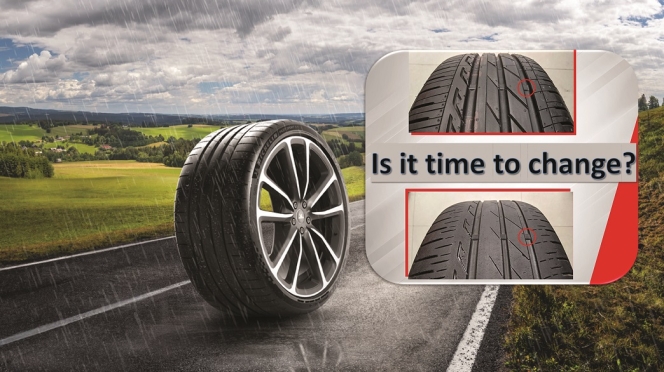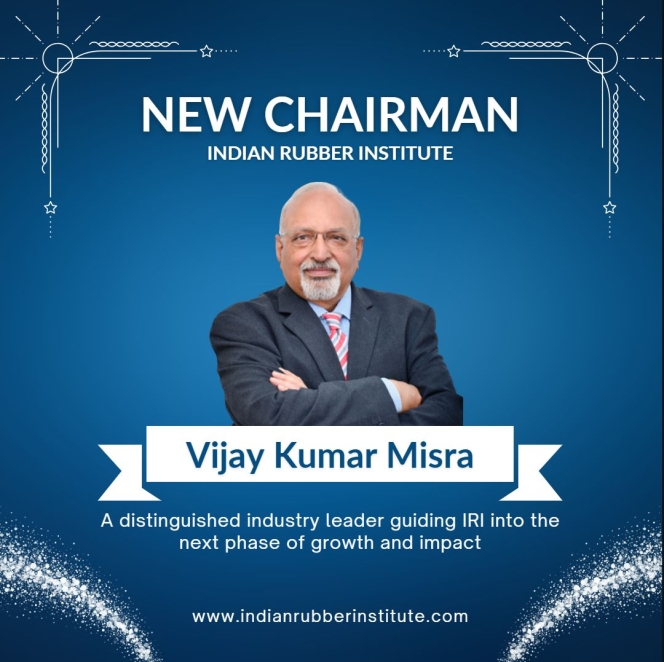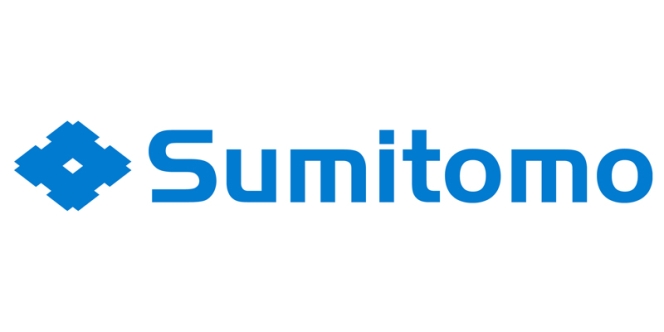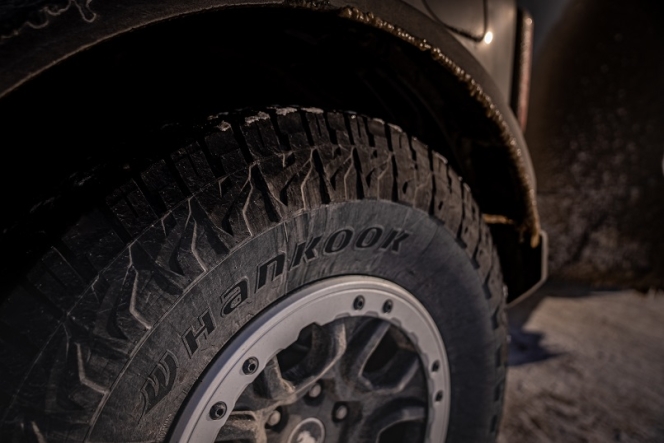New And Worn Phase Tests Make Tyres Safer And Long Lasting
- By Ertugrul Bahan
- December 25, 2024

What does ‘Tyre Labelling’ guarantee? It shows schematically the classification of tyres in terms of fuel consumption, noise and wet performance. The tyre manufacturer is obliged to demonstrate the values indicated on the label in tests carried out in accordance with the test method described in EU regulations. This essentially means that the performance parameters of the tyres in question are at least exactly at this level or above the positive side of the limit scale, but only when the tyres are new, i.e. at the beginning of tyre installation. It is technically expected that the stated performance values will not change until the end of the first 10,000 kilometres or until wear of approximately 1.5 mm occurs.
Who knows what the actual grading of tyres will be after the second 10,000 kilometres or at 3 mm down wear stage? No one can correctly estimate what the wet noise and traction will be after most of the mini-kerf or notches are eliminated or reduced, but only when the tyre is tested it can be monitored. Or if the tyre's grooves are completely ‘V’ type, and after a period of time the tyre's traction forces change significantly, then rolling resistance and wet braking behaviour will become significantly different.
The performance level of worn tyres might be therefore quite uncertain and must be taken into account on a legal basis. The wet performance of worn tyres will be a check point for ‘wet grip class’ grading on EU Tyre label after 1st July of 2024, which is in line with the demand of tyre industry parties asking more sustainability. Thanks to the introduction of a new EU regulation R117-04, tyres sold in EU distribution channels meet the same minimum wet braking performance requirements not only when new but also when worn down to the legal minimum tread depth of 1.6 mm.
EU is the most sensitive and advanced market to sustainability in the world. It is driven at any time by the increasingly aspiring regulatory agenda and there is always a constant development in this respect. Requirements of consumers or the automotive industry are more demanding by a more conscious society. Tyres’ life cycle contributing to a more sustainable future proactively identifies and addresses the potential human health and environmental impacts associated with the industry. Therefore, safer and more environmentally sound mobility options are always geared towards resource conservation and fuel economy amongst the focus points of innovations.
Thanks to the introduction of a new EU regulation R117-04, tyres sold in EU distribution channels meet the same minimum wet braking performance requirements not only when new but also when worn down to the legal minimum tread depth of 1.6 mm. They must therefore be tested both as new and as worn tyres before receiving the 'wet grade’ on the label. This means that EU drivers can now buy safer tyres that meet the legal minimum standards for wet braking performance, even when worn down to the legal minimum tread depth.
As a weak point of R117-04 regulation, it only covers wet braking of new and worn-out tyres. It does not cover ‘noise’ and ‘rolling resistance’ items given on labelling or more simply endurance performance level of especially cheap tyres in the market with a 1.6 mm tread depth assuming they will not change!
Informal wet braking tests conducted by ETRTO show that the wear rate of group ‘C1’ tyres can decrease by up to 50 percent, while the loss rate of group ‘C2’ and ‘C3’ tyres remain in 10 percent. The new regulation R117-04 therefore does not apply to group ‘C2’ and ‘C3’ tyres, as they normally have a greater tread depth and it is assumed that the level of wet braking does not change during the wear phase. However, since group ‘C1’ tyres have a smaller tread depth, it is assumed that their contact patch is more subject to negative changes, so that the wet braking performance also changes more after use.
As a weak point of R117-04 regulation, it only covers wet braking of new and worn-out tyres. It does not cover ‘noise’ and ‘rolling resistance’ items given on labelling or more simply endurance performance level of especially cheap tyres in the market with a 1.6 mm tread depth assuming they will not change!
The new R117-04 regulation may mainly be considered as sustainability issue rather than total safety. It promotes tyre usage until defined min tread depth creating a room to consumers to trust the tyres above minimum tread depth level. However, it should still be positively considered a step forward to the worn tyres’ safety regulation. It accepts that wet braking level of worn tyres are more critical and important safety issue and should be regulated. By the way, consumers may use their tyres in longer stage, giving a contribution to a greener world.
The transparency provided by the new regulation, which came into force on 2024 July, is even more essential, as some performances deteriorate over time, especially in terms of safety. R117-04 in this term guarantees enhanced safety, better respect for the environment and the protection of motorists’ purchasing power.
Common consumer behaviour shows that 50 percent of car tyres are demounted before reaching a residual depth of 3 mm and replaced with a new set of tyres.

Michelin has studied the safety margin of used tyres since 2018 and has stressed the importance of tyres to be used until 1.6 mm remaining tread depth. The best way was to test worn tyres because it can easily reflect the real risks a driver can face on the road. During the study, the results were surprisingly varied. It was shown that some worn tyres performed better than new tyres when braking on wet roads. This was exactly what Michelin has been saying for a long time. The performance of different tyre brands also varies considerably.
Common consumer behaviour shows that 50 percent of car tyres are demounted before reaching a residual depth of 3 mm and replaced with a new set. In global scale, this makes around 400 million tyres are prematurely scraped every year. A quarter of this amount, or almost 100 million tyres, would save at least 6 million tonnes of CO2 instead of reproducing it. The implementation of this regulation will certainly have an impact on the demand for new tyres in Europe.
R117-04 presently focus mainly on only tread depth attribute, while aspects such as ageing or rubber structural integrity degradation remain outside the scope of this amendment.
In addition, in the hope that higher performance requirements will not result in higher costs for consumers, the changes are designed to encourage consumers to continue using sustainable tyres instead. Once drivers are confident in their tyres, they will drive to a tread depth of 1.6 mm, potentially saving EUR 6 billion a year by not complying with proposals to reduce tread depth to less than 3 mm.
R117-04 presently focuses mainly on tread depth attribute, while aspects such as ageing or rubber structural integrity degradation remain outside the scope of this amendment. We also mentioned some additional weak points above. However, imposing these standards, will increase the driver’s awareness for worn tyres performance limits and let them to make more informed decisions when purchasing tyres.
On the other hand, understanding the ‘NEW AND WORN PHASE TESTS CONCEPT’ will become the standard mentality of the customer, who will be able to assess the attitude towards the initial performance of the tyres, which may change over time, but should not! The new challenge will be to weed out products that are not gripping in the wet when worn and have not met these expectations for years..!
Indian Rubber Institute Appoints Industry Veteran Vijay K Misra As Chairman
- By TT News
- December 30, 2025

The Indian Rubber Institute (IRI) has confirmed Vijay K Misra as its new Chairman following a formal election. With a distinguished career spanning nearly 50 years in the tyre and rubber sector, Misra possesses extensive expertise in technology, product development, international collaborations and major greenfield projects.
His deep industry connections and proven leadership are anticipated to steer the IRI through its next period of growth and enhanced impact. The Institute also formally acknowledged Misra's pivotal role in founding the Dr D Banerjee Centre of Excellence in Mysuru, a premier hub for advanced training and industry-academia synergy.
Concurrently, sincere appreciation was extended to outgoing Chairman Dr R Mukhopadhyay for his valuable guidance, as he continues to support the Institute in the role of Chairman Emeritus.
Sumitomo Rubber Restructures Top Management
- By TT News
- December 26, 2025

Sumitomo Rubber Industries, Ltd. has announced that its Board of Directors has approved a forthcoming change to its representative leadership at a meeting on 25 December 2025, pending formal ratification at the Annual General Meeting of Shareholders scheduled for 26 March 2026.
The shift is part of a planned reorganisation of the company’s management framework effective from that date. Under the new structure, current Director and Senior Executive Officer Yasuaki Kuniyasu is slated to be appointed as the new Representative Director, President and CEO. Concurrently, the present President and CEO, Satoru Yamamoto, is expected to transition to the role of Representative Director and Chairperson of the Board.
Yasuaki Kuniyasu, aged 56, began his career with the company in April 1992. His tenure includes significant leadership roles, such as General Manager of the Tyre Technology Headquarters and, from January 2023, General Manager of the Corporate Management Planning & Administration Department. He has served as a Director and Senior Executive Officer since March 2023 and held 8,400 shares in the company as of 30 June 2025.
This planned succession aims to establish a renewed executive team to guide the company forward under its new governance model.
Back-To-Back CDP 'A' Rating Cements Hankook Tire's ESG Leadership
- By TT News
- December 26, 2025

Hankook Tire has secured a top-tier ‘A’ rating from the Carbon Disclosure Project (CDP) in Climate Change category for the second year in a row, affirming its status as a global leader in environmental stewardship. The CDP assessment is among the world’s most authoritative benchmarks for corporate sustainability, evaluating governance, emissions reduction and transparency. Hankook’s achievement reflects its comprehensive approach to managing climate impacts throughout its entire value chain, from raw materials to end-of-life tyre management.
This recognition is underpinned by a robust, long-term strategy targeting net-zero emissions by 2050. In 2023, the company’s near-term 2030 goals and its 2050 net-zero ambition were formally validated by the Science Based Targets initiative (SBTi). Governance is central to this progress, with a dedicated Board-level Climate Change Committee ensuring climate risks and opportunities are integrated into core business decisions and that reduction progress is meticulously tracked and disclosed.
Operationally, Hankook is transforming its global production towards sustainable systems. It pioneered the International Sustainability & Carbon Certification (ISCC) PLUS in the tyre industry at its Geumsan Plant in 2021, a milestone since extended to facilities in Hungary and Daejeon. This establishes a certified framework for manufacturing sustainable tyres across consumer, original equipment and motorsport segments.
Complementing these efforts, Hankook is driving material innovation through strategic partnerships. The company is collaborating with firms like ROTOBOOST and Solvay to develop next-generation, low-carbon materials such as turquoise hydrogen-based carbon black and circular silica. It is also engaging in national research consortia to scale promising carbon reduction technologies. These initiatives are part of Hankook’s broader circular economy vision, branded E.Circle, which focuses on reducing fossil fuel dependence, conserving natural resources and systematically cutting carbon emissions.
Hankook’s leadership has garnered significant external validation. It earned the highest environmental accreditation from the Fédération Internationale de l’Automobile and was named one of the World’s Most Sustainable Companies of 2024 by TIME and Statista. Together, these accomplishments demonstrate how Hankook Tire is embedding sustainability into its corporate identity to build long-term value and industry-wide resilience.
GRI Tyre Wins Sustainability And Innovation Honours At Automechanika Dubai
- By TT News
- December 23, 2025
ULTIMATE GREEN XT tyre has won two awards at the Awards, receiving Sustainable Product of the Year and being Highly Commended in the Innovative Product of the Year category.
The awards were presented last week in Dubai and add to earlier recognition for the product, which received the Best Innovation in Sustainability award at in Chicago earlier this year.
The Sustainable Product of the Year and Innovative Product of the Year categories recognise products that demonstrate environmental responsibility and technological innovation in the global automotive and mobility industry. The judges cited the tyre’s use of environmentally friendly materials and its reduced environmental impact.
The ULTIMATE GREEN XT, identified by its green colour, has been developed with a focus on sustainability while maintaining performance, durability and safety standards. The Sustainable Product of the Year award reflects its contribution to more sustainable mobility solutions, while the innovation commendation highlights its design and engineering approach.
Automechanika Dubai is the largest international trade fair for the automotive aftermarket across the Middle East, Africa and South Asia, bringing together manufacturers, suppliers and industry leaders. Recognition at the event underlines the international profile of the ULTIMATE GREEN XT following its earlier award in the United States.
Barry Guildford, global commercial director of GRI Tires, said, “This recognition at Automechanika Dubai is a proud milestone for GRI. The ULTIMATE GREEN XT reflects our vision of delivering innovative tire solutions that support sustainability while meeting the evolving needs of our customers worldwide.”
GRI said it would continue to invest in research and development aimed at advancing sustainable tyre technologies, following the continued recognition of the ULTIMATE GREEN XT in international markets.







Comments (0)
ADD COMMENT